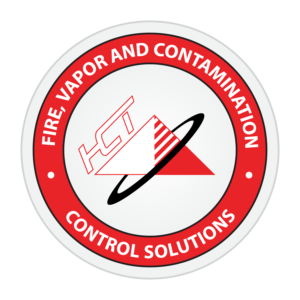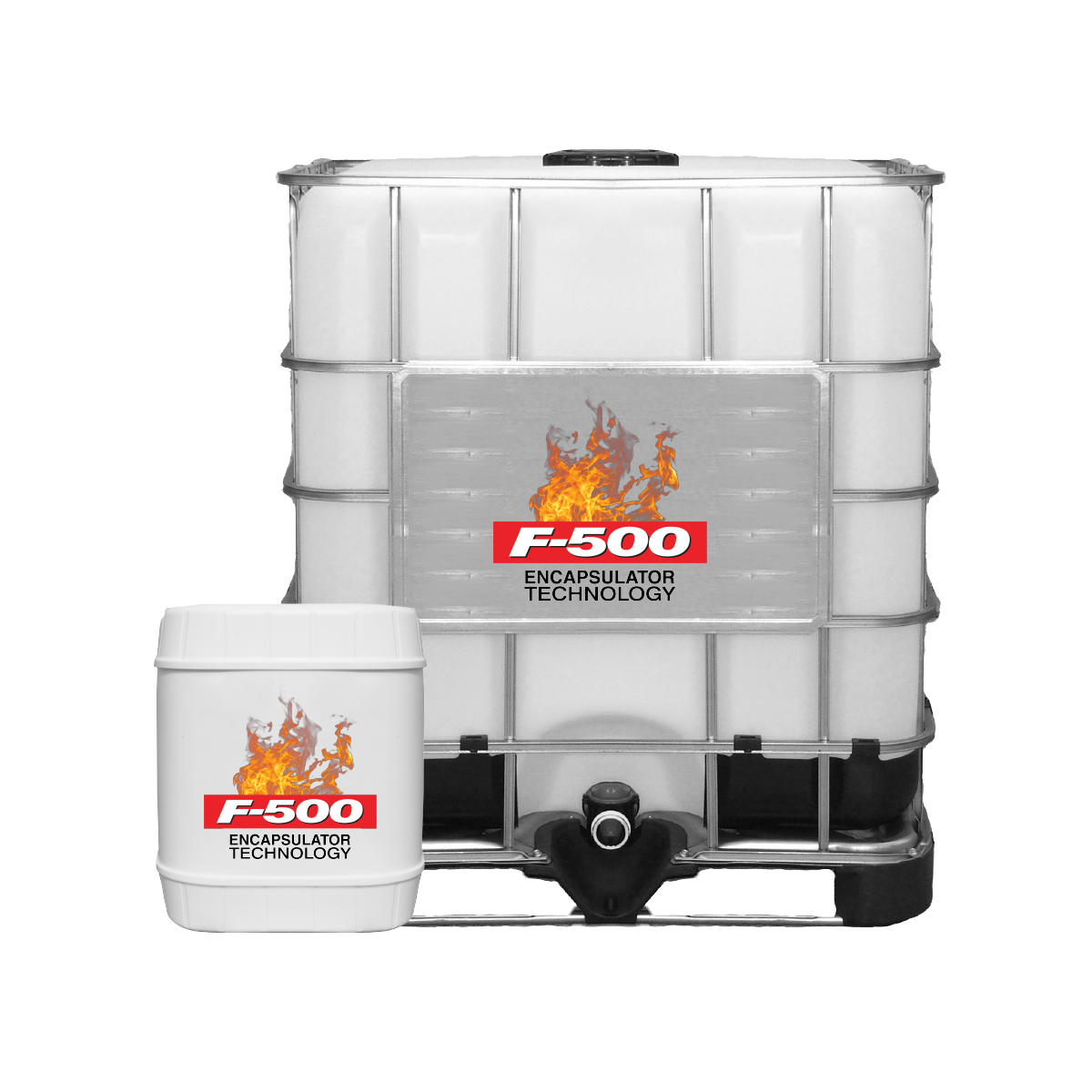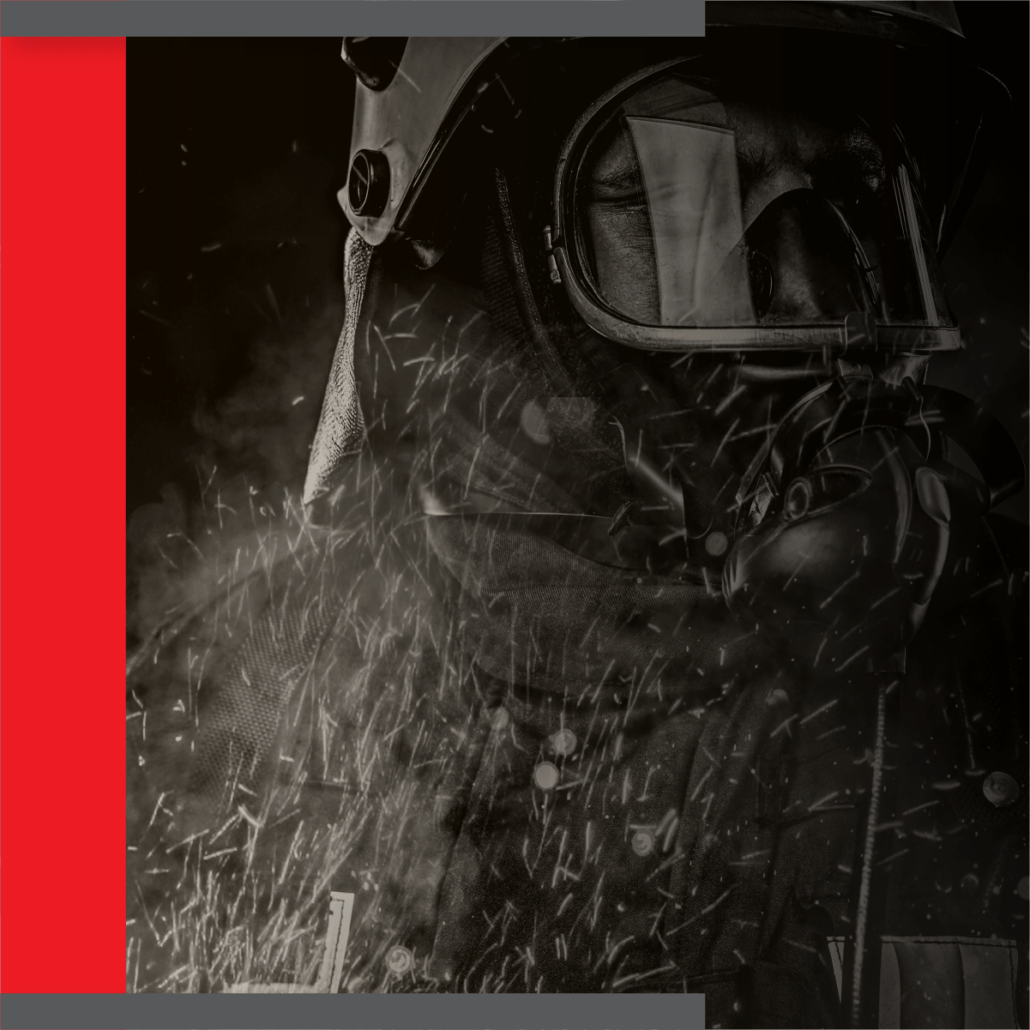Materials like flammable metals, lithium-ion batteries and synthetic fabrics have become commonplace in the home, at work and in industrial facilities. F-500 Encapsulator Agent’s unique features will give your team the ability to safely mitigate these difficult-to-extinguish fire hazards.
F-500 Encapsulator Agent is not a foam. While foam works on a mechanical level, Encapsulator Agents work on a chemical molecular level, changing the composition of plain water.
NFPA 18A Section 7.7
Spherical Micelle Stability Testing
“This section covers the test procedures to evaluate the ability of a water additive solution to form and maintain stable spherical micelles capable of encapsulating combustible and flammable liquids (polar and non-polar), rendering the flammable liquids nonflammable, nonignitable and nonexplosive and maintaining that encapsulation in the presence of high heat over an extended period of time.”
NFPA 18A Annex 4.3
Lithium-ion Battery Testing
“Encapsulator Agents (Sec. 7.7) have been tested extensively by third-party testing organizations. This testing has been controlled, scientific and highly instrumented, documenting fire suppression, control and elimination of thermal runaway and encapsulation of both flammable electrolyte and other explosive off-gases, rendering them nonexplosive. Encapsulator Technology reduces the toxicity of HF gas.”
Encapsulator Agents
Encapsulator Agents start as a singular molecule with a polar head and non-polar tail.
Fire Chemistry
Encapsulator Agents work on all four legs of the fire tetrahedron simultaneously.
Fuel
Encapsulation separates fuel from oxygen.
Heat
Thermal energy is absorbed through Rapid Heat Reduction.
Oxygen
Encapsulation separates oxygen from fuel.
Chemical Reaction
Free radical energy is absorbed, resulting in Free Radical Interruption.
Unique Features
These unique features make Encapsulator Agents the most versatile agents available today.
Encapsulation
Encapsulator Agents encapsulate polar and non-polar fuels on a chemical molecular level. NFPA 18A Section 7.7
Benefits
- Expand Hazard Mitigation Capabilities
- Establish Confident Incident Response
- Establish Long-term + Stable Burn Back Resistance
- Prevent Re-ignition
Rapid Heat Reduction
Encapsulator Agents create a thermal circuit, forming an outer layer of agent “skin” on each droplet that drives heat into the internal portion of the droplet.
Benefits
- Expand Rapid Knockdown Capabilities
- Improve Droplet Utilization
- Prevent Scalding Steam + Excess Runoff
- Decrease Time, Resources + Exposure
Free Radical Interruption
Encapsulator Agents absorb free radical energy, interrupting the free radical chain reaction.
Benefits
- Reduce Carcinogenic Toxin Concentration
- Improve Health + Longevity
- Improve Visibility + Air Quality
- Reduce Environment Contamination
Eco-friendly
Encapsulator Agents are fluorine free, biodegradable and non-corrosive. Their active ingredients contain no PFOA/PFAS.
Benefits
- Improve Community Health
- Prevent Hazardous + Costly Cleanup
- Prevent Environment Contamination
- Prevent Machinery Deterioration
Fire Hazards
Encapsulator Agents are the perfect solution for a wide variety of fire hazards, including three-dimensional fires and energized environments. F-500 Encapsulator Agent is recommended for Class A, Class B (Polar + Non-polar), Class D and Lithium-ion Battery fire hazards.
Use the correct percentage of F-500 EA for Class A fire hazards. Class B fire hazards. Class D fire hazards. Lithium-ion Battery fire hazards.
| Hazard | Examples | % |
|---|---|---|
| Class A Materials | Wood, Paper, Cloth, Rubber, Dust, Etc. | 0.5% – 1% |
| Class B Fuels [Polar] | Ethanol, E10, E85, Acetone, Etc. | 3% |
| Class B Fuels [Non-polar] | Gasoline, Diesel, Jet Fuel, Hydraulic Oil, Etc. | 3% |
| Class D Metals | Magnesium, Titanium, Aluminum, Etc. | 3% |
| Lithium-ion Batteries | Batteries, Energy Storage Systems (ESS) | 3% |
| Transformers* | Energized Environment* | 3%* |
*F-500 EA can be used on both Class C [Energized Environment] and energized transformer fires up to 345 KV, streaming from 125 ft. after consulting SOGs.
Contact
Please fill out the form below for more information or to request a quote!











